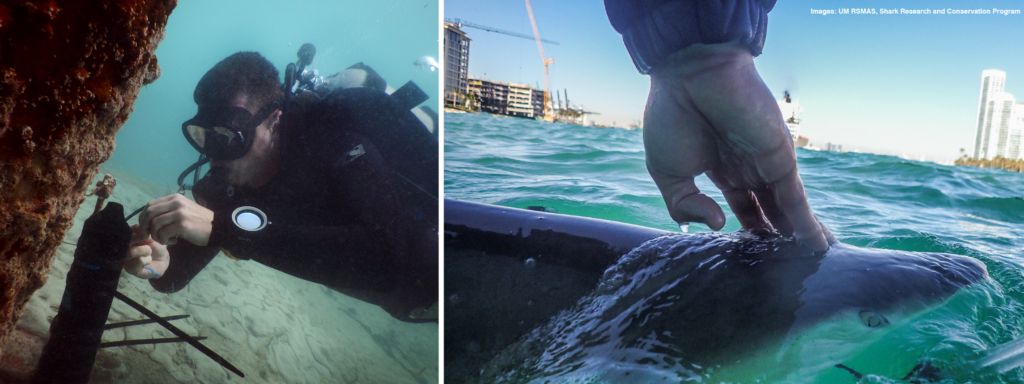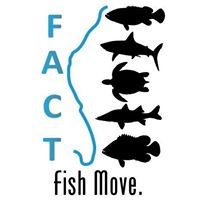
Project Overview
Coastal urbanization, and the associated increase in pollution, run-off, and water quality concerns, is stressing some of our most important coastal marine ecosystems. The Shark Research & Conservation Program at the University of Miami is trying to understand how sharks are adapting to ecosystem changes brought on by increasing urbanization within and around Biscayne Bay, FL. The Biscayne Bay watershed encompasses the city of Miami, the 44th largest city by population in the United States, and the port of Miami which is ranked as one of the largest ports by volume in the United States. Weekend recreational boating traffic within Miami-Dade County is the highest of any county in Florida. As such, northern Biscayne Bay is a highly polluted, degraded, and urbanized environment. Researchers are tagging sharks with acoustic transmitters and monitoring them with an array of 40 acoustic receivers within and around Biscayne Bay, FL. to understand how coastal urbanization affects the distribution, movements, and immunological health of coastal sharks. Shark species being tagged include Blacknose, Blacktip, Bull shark, Great hammerhead, Lemon, Nurse, and Tiger sharks.
Why this Matters
Animals living in urban landscapes face different threats and stressors than those who inhabit a pristine and clean environment. Florida’s coastline – identified as a hotspot for coastal and environmental concerns – suffers from habitat fragmentation, run-off, eutrophication, and species loss. This study explicitly examines how coastal urbanization is affecting the behavior and health of sharks. Policymakers need these data to implement effective conservation strategies and to understand and predict how development of coastal areas can impact coastal ecology.
Lead Organizations
Partners
- Austin Gallagher, Beneath the Waves Inc.
- Joan Browder, Tom Jackson, NOAA National Marine Fisheries Service
Supported by
- Save our Seas Foundation
- Disney Conservation Fund
- Ocean Tracking Network
- NOAA National Marine Fisheries Service
Project Status
- Ongoing
Contact
Resources & Publications
- Urban Sharks Project Website
- GPS for Sharks Project Website
- Use of marine protected areas and exclusive economic zones in the subtropical western North Atlantic Ocean by large highly mobile sharks (video)
- Gallagher AJ, Skubel RA, Pethybridge HR, Hammerschlag N. (2017). Energy metabolism in mobile, wild-sampled sharks inferred by plasma lipids. Conservation Physiology; 5 (1): cox002. doi: 10.1093/conphys/cox002.
